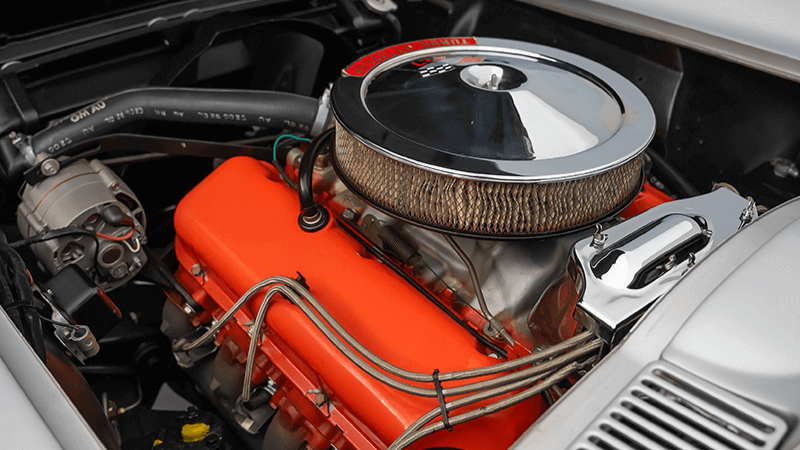In the mid-20th century, cars were more than just a way to get from point A to point B—they became cultural touchstones that transformed daily life.
From the open highways to suburban driveways, automobiles symbolized personal freedom, new adventures, and a fresh sense of identity.
Certain models captured the spirit of the era, becoming legends that influenced not just transportation, but also fashion, music, and family traditions.
These iconic cars helped shape the automotive landscape, leaving a lasting imprint on generations and fueling memories that still resonate today.
Buying a used car can be a smart financial move, but it’s not without risks.
While many pre-owned vehicles offer years of dependable service, some are notorious for hidden issues that can drain your wallet and patience.
Experienced mechanics often warn buyers to steer clear of specific makes and models, based on patterns of mechanical failures, costly repairs, or serious safety concerns.
Understanding which cars are most frequently flagged by the pros can help you avoid regret—and expensive surprises—down the road.
Nineteen seventy-two was a humdinger in Detroit, and no manufacturer felt it more than Ford Motor Company. Over the previous two years, Ford was replete with high-performance engines measuring 302, 351, and 429 cubic inches, but for 1972, Ford Motor Company was left with a 351 four-barrel as its peak engine. Mercury offered one version for the Cougar that was not available anywhere else.
What happened to the 429 Cobra Jet? Discontinued. What about the 429-4V? Ford didn’t even try, going from 360 gross to 206 net horsepower. Big-block horsepower was dead in Dearborn, while Highland Park continued to offer a relatively potent 440 and all four General Motors performance brands could name LS5, HO, W30, and Stage 1 in their rosters.
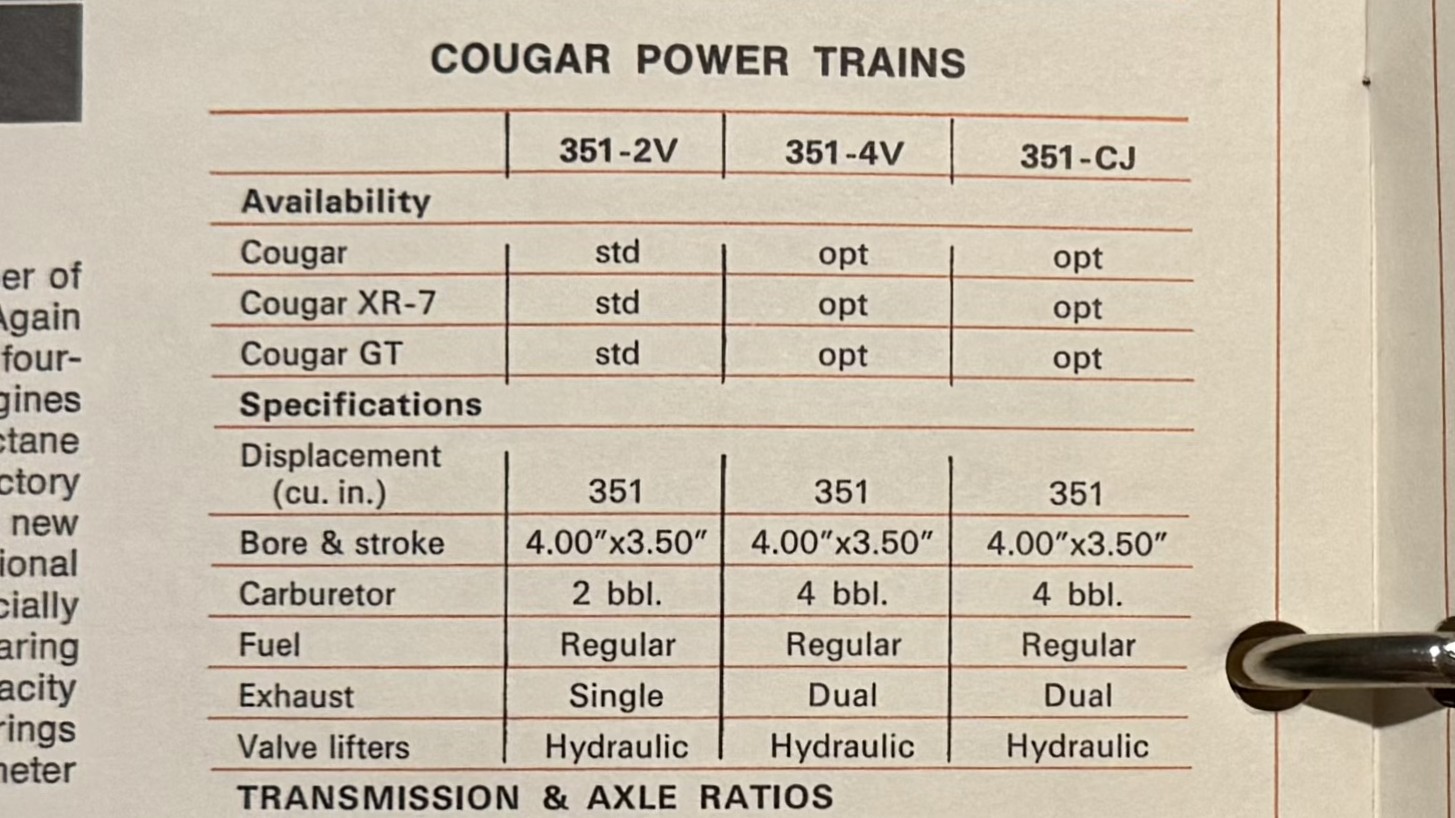
The performance engines that Ford Motor Company offered for 1972 are interesting. The standard performance 351 was called the 351 Cobra Jet, defined by a “Q” as the fifth character of the VIN. It was a mid-year addition in 1971, a low-compression companion to the standard 351-4V that ended up usurping it as part of the new values imposed upon Detroit by the District of Colombia. For 1972, this engine was rated at 266 net horsepower for the Mustang and 246 for the Torino and Montego (though I can’t say if there’s much, if any, difference between the two).
Then there was the 351 HO, a remnant of the Boss 351 that only appeared between the shock towers of the Mustang. This truly was a glorious engine, on par with big-blocks at the time, but only 398 were built, so little impact was made.
So what about the Cougar?
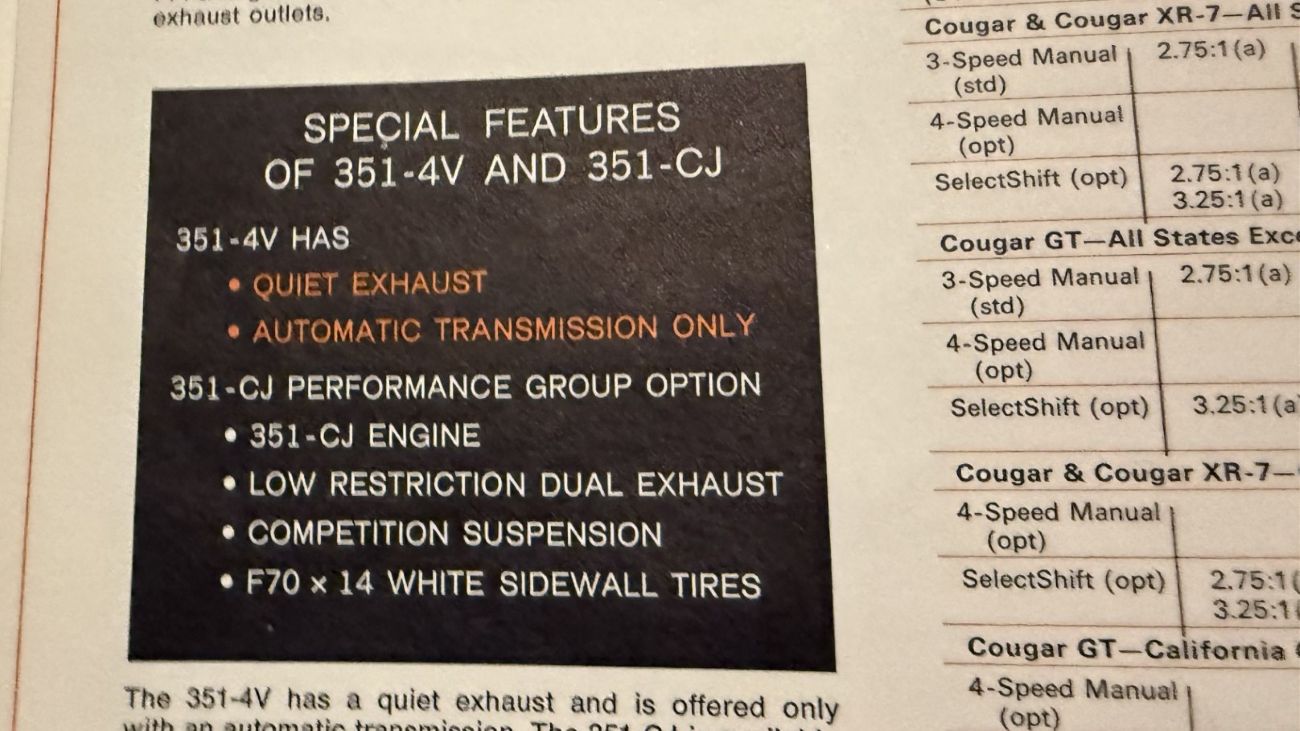
Interestingly, the Cougar offered two versions of the Q-code 351 four-barrel—something distinct from other products in the FoMoCo portfolio. To a modern mind, asking the question, “Why would Mercury go through the expense of offering two distinct engines that shared 98 percent of the same parts?” seems like an appropriate query, but let’s not forget that the Cougar, while still a pony car, had been moving into the realm of personal luxury. For the Cougar’s target market, the upgrade from the standard 351-2V—the 351 Cobra Jet—may have been a bit too unfettered for their tastes, so Mercury offered a toned-down version called the 351-4V that was only offered with an automatic transmission with a 12-inch converter and “quiet exhaust.” Horsepower was 262, a loss of four.
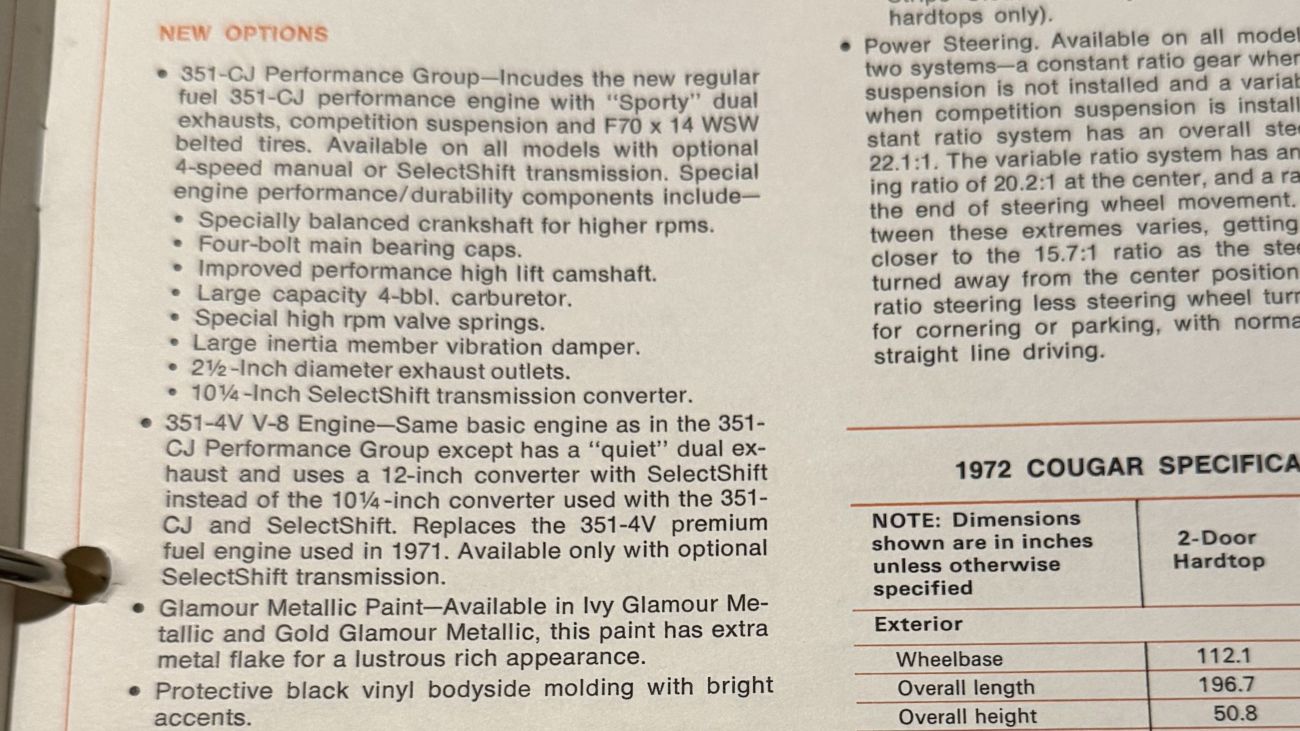
If you wanted the high-performance 351 Cobra Jet, you had to order the 351 Cobra Jet Performance Group to trigger the engine upgrade and equipment. Ordering the package scored you a low-restriction exhaust system, Competition Suspension, F70 x 14-inch whitewalls, and a 10.25-inch converter for automatic-equipped vehicles.
If you’re interested in knowing how many Cougars were produced with the 351 Cobra Jet, we can provide that answer thanks to Marti Auto Works.
| Car | Q-code 351-4V | Q-codes with CJ Package |
| Cougar Hardtop | 566 | 207 (including 66 four-speeds) |
| Cougar Convertible | 69 | 20 (including 5 four-speeds) |
| Cougar XR-7 Hardtop | 2,557 | 877 (including 156 four-speeds) |
| Cougar XR-7 Convertible | 368 | 137 (including 32 four-speeds) |
Last weekend, I attended my 25-year high school class reunion in Utah. It was a rewarding experience to reconnect with friends who are now of middle-age—many of whom who now have adult children of their own.
We collectively agreed: Time seems to accelerate as we get older, and we all found it hard to believe that a quarter-century has flown by. Adding insult to injury, a vehicle that was built in 2000 can now wear “historic” license plates here in Arizona. I recently discussed the Honda Insight as one example of a “Class of 2000” car that is now eligible for such a distinction—here’s another.
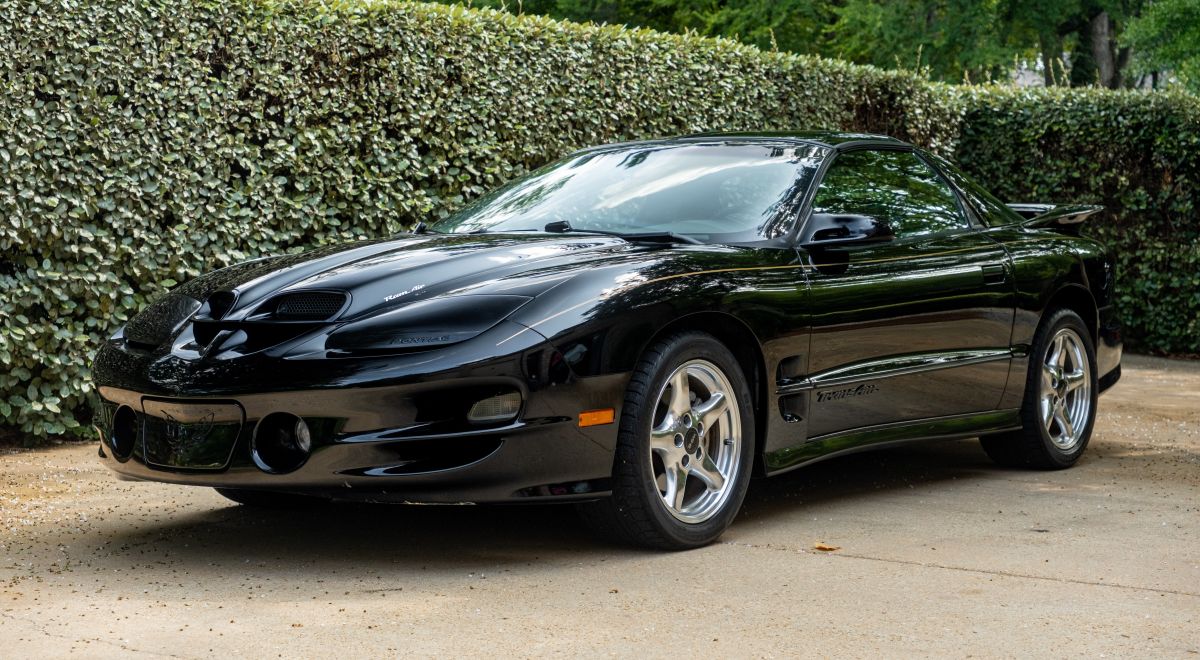
Featured on AutoHunter is this low-mileage 2000 Pontiac Firebird Trans Am WS6. The car is being sold by a private seller in Madison, Mississippi, and the auction will end Monday, June 16, 2025, at 11:15 a.m. PDT.
Finished in menacing black, it’s a perfect symbol of Pontiac’s performance-oriented prowess. After all, the brand’s slogan in 2000 was “Driving Excitement.” From its pop-up headlights and sleek body lines to its aggressive rear spoiler, the car screams Y2K-era Pontiac.
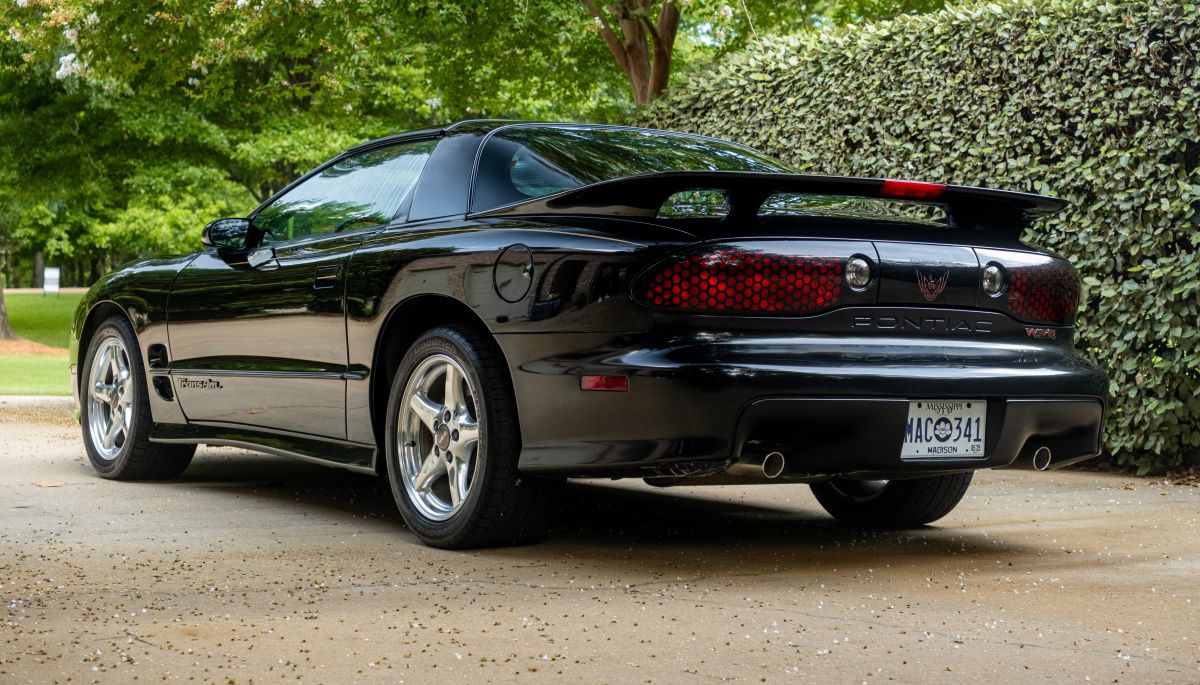
The fourth-generation Firebird was introduced in model-year 1993, with production taking place at General Motors’ Quebec, Canada, plant. The WS6 package added suspension enhancements such as thicker sway bars and higher spring rates for improved handling. So-equipped cars could also be identified by the Ram Air hood, distinctive wheels, unique tailpipes and special badging. The WS6 looked muscular from any angle, and it had the power to back up the stance.
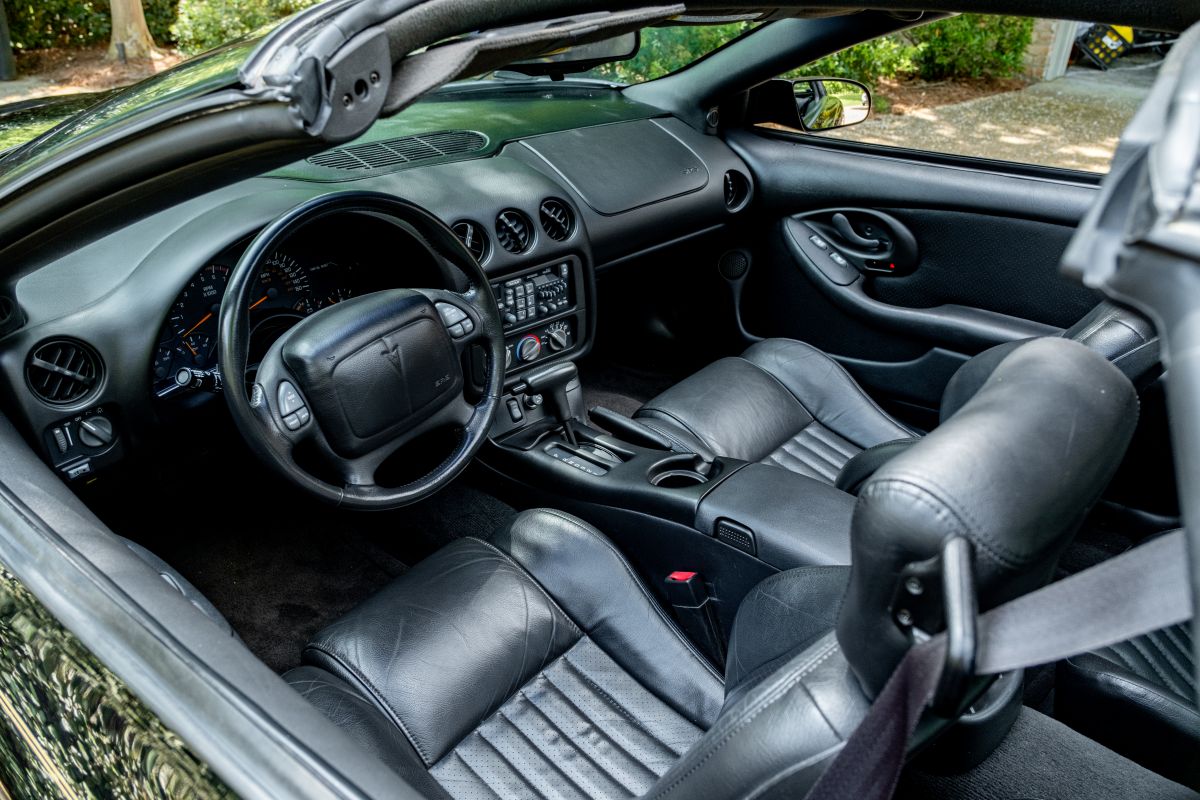
According to the CARFAX report, this Trans Am has been Mississippi-owned since new. It shows only 55,175 miles on the odometer, which comes out to a scant 2,200 miles per year. The car’s clean inside-and-out look makes that mileage believable. The listing includes a video with a start-up and engine bay overview.
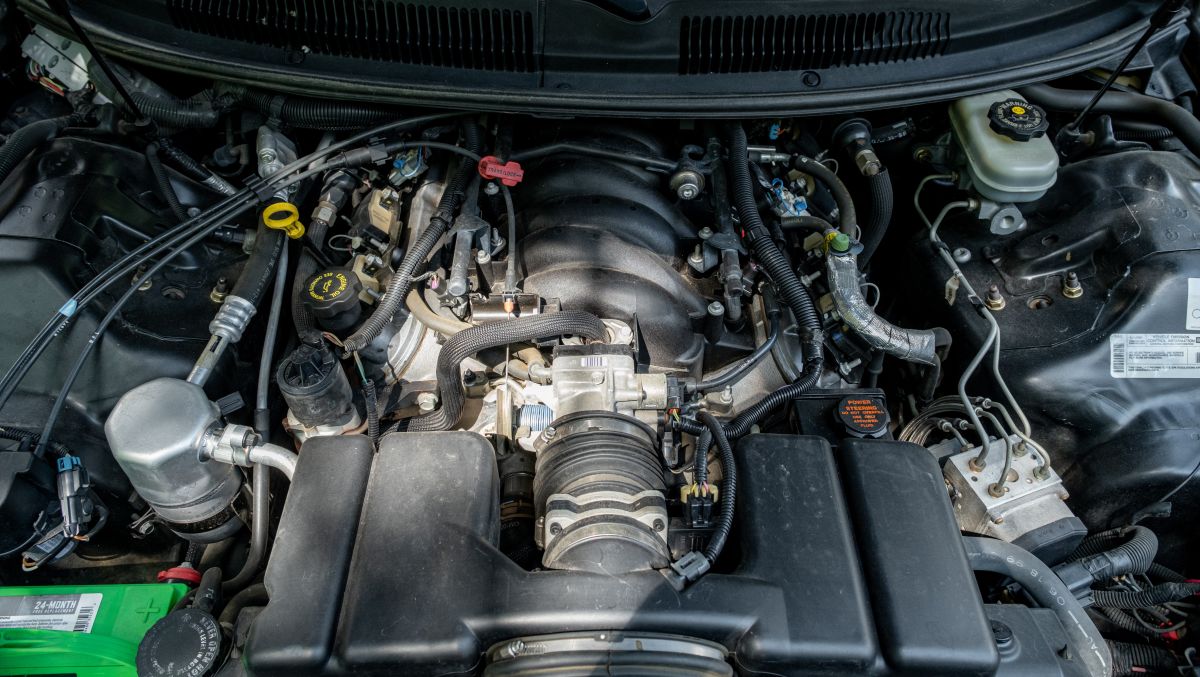
Underneath the bulging hood lives a 5.7-liter LS1 V8 mated to a 4L60E four-speed automatic transmission and a limited-slip rear end. When new, the powertrain was rated at 320 horsepower and 345 lb-ft of torque. One of my favorite magazine advertisements for the Trans Am said, “To a bug, it’s a 320-horsepower blender.” Sounds about right!
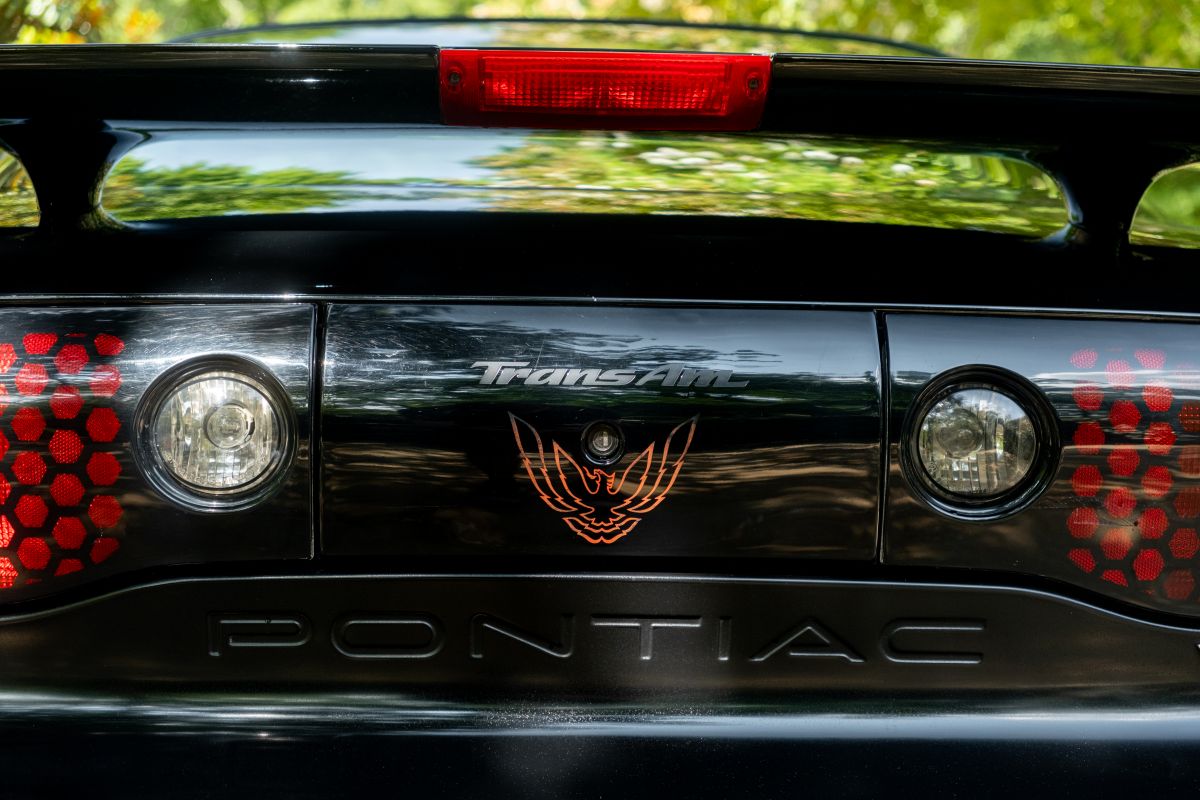
The WS6 made its place in automotive history and has become a sought-after classic. And finding one nowadays that remains unmodified—let alone in a handsome black-on-black color combination—is a rare feat. It also has a 12-disc CD changer for all your 2000-era music like Savage Garden and Matchbox 20. Don’t miss the chance to pick up a piece of history.
The auction for this 2000 Pontiac Firebird Trans Am WS6 ends Monday, June 16, 2025, at 11:15 a.m. (PDT).
Visit the AutoHunter listing for more information and a photo gallery
Imagine cruising down the open road in a fully restored 1966 Corvette Sting Ray convertible—wind in your hair, the roar of a 427 big-block V8 under the hood, and every eye on you. This isn’t a fantasy. It’s your chance to win one of the most iconic American muscle cars ever built, thanks to the Classic Corvette Dream Giveaway. With its rare low mileage, award-winning restoration, and head-turning performance, this Sting Ray could soon be parked in your garage—all while your entry supports a great cause. Click here to enter now!
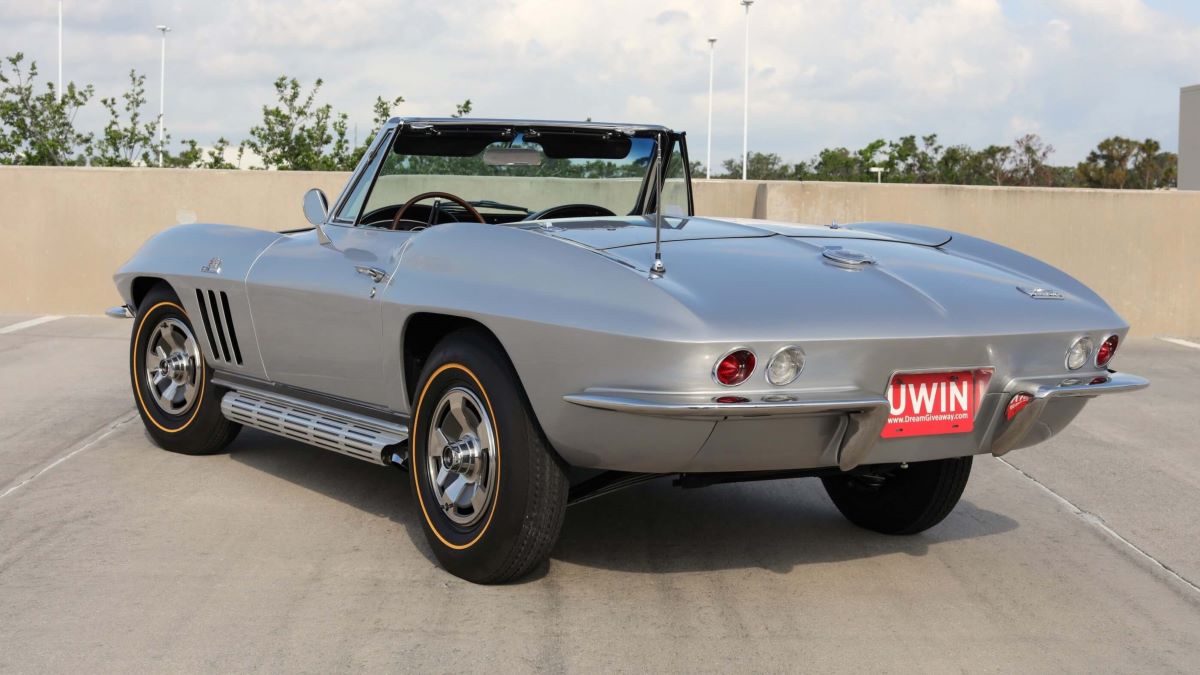
This 1966 Corvette Sting Ray convertible is a three-time NCRS Top Flight award winner, recognized for its exceptional authenticity and quality of restoration. It has only 19,607 original miles on the odometer, making it one of the lowest-mileage examples in the country. Every inch of this car has been restored to concours-level detail, from the flawless paint and chrome to the precision-tuned mechanics under the hood.
At the heart of this Corvette is the iconic 427 cubic-inch big-block V-8 engine, factory rated at 425 horsepower. It features high-compression internals, a four-barrel carburetor, mechanical lifters, and delivers raw, classic American power. The car is equipped with a four-speed Muncie manual transmission, making it a purist’s dream. Side-exit exhaust pipes add to the performance sound and the aggressive styling. A factory-correct color-matched auxiliary hardtop comes included, complementing its road-ready convertible form.
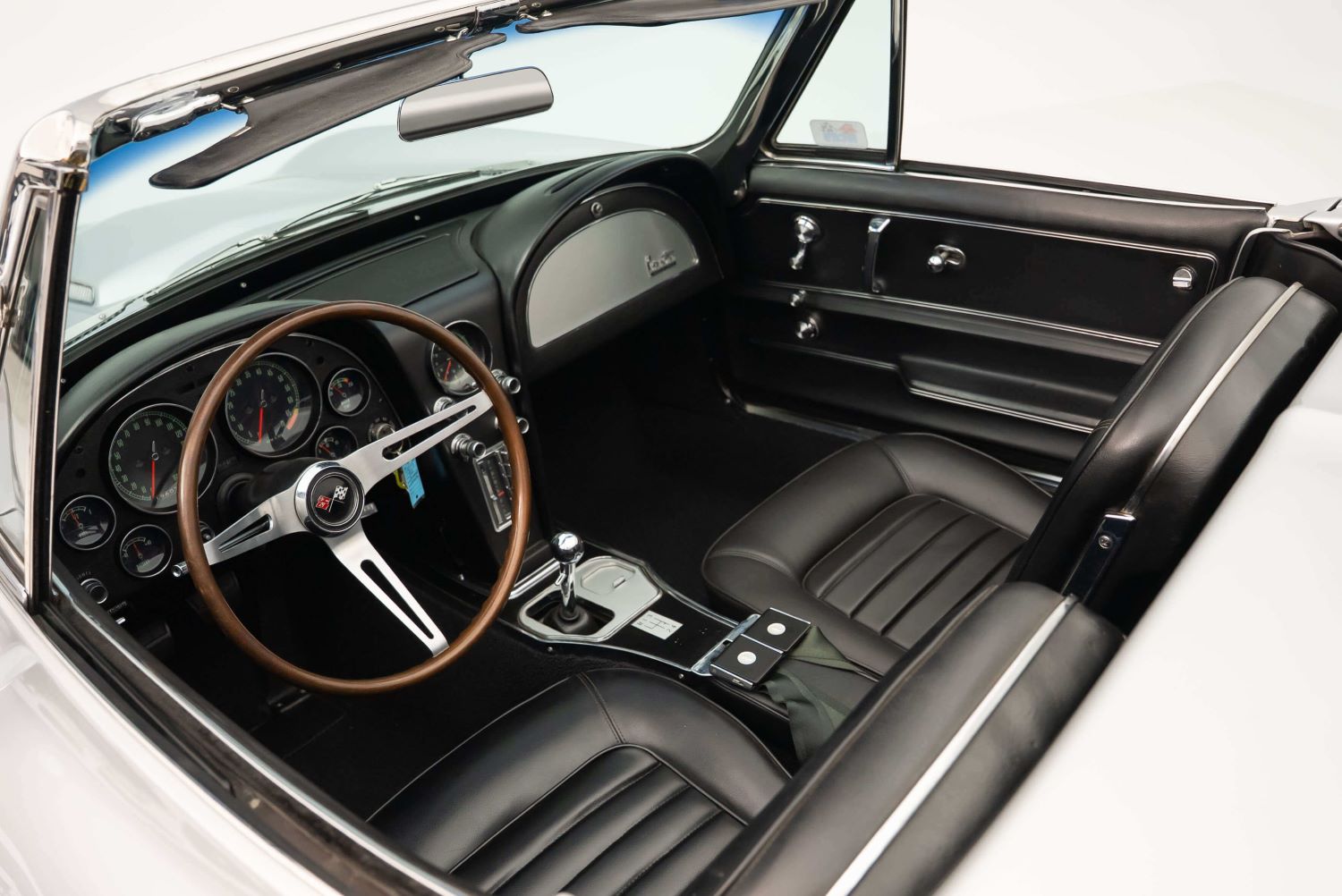
This Sting Ray isn’t just a showpiece—it’s built to be driven and admired. With its sharp lines, hidden headlights, and signature Corvette details, it turns heads wherever it goes. It represents the pinnacle of mid-60s American sports car design and engineering.
Your entries support veterans’ and children’s charities, ensuring that every donation helps those in need. Even a $3 donation enters you into the sweepstakes and helps make a difference.
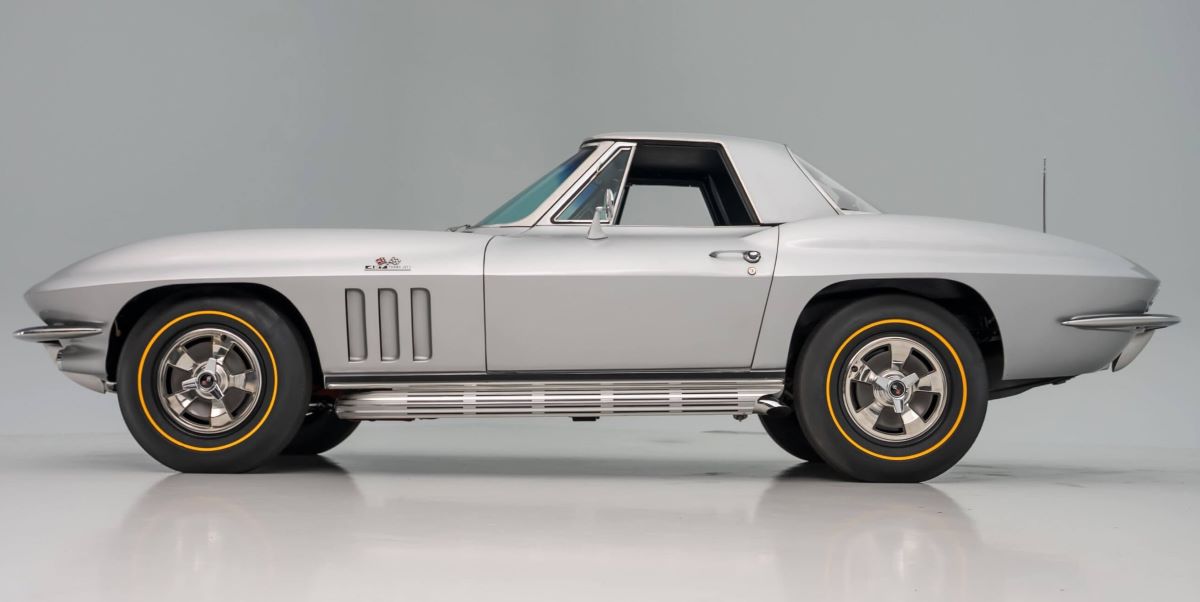
This isn’t just about winning a car. It’s a chance to own an iconic piece of American automotive history—restored, documented, and built for enthusiasts. Whether you’re a lifelong Corvette collector or simply someone who appreciates timeless design and high-performance engineering, this 1966 Sting Ray is a once-in-a-lifetime opportunity.
ENTER TODAY. Support great causes. And maybe, just maybe, you’ll soon be behind the wheel of the ultimate Corvette dream.
As a car enthusiast, the first thing you probably think of when you see an attractive vehicle is how nice it would be to drive for fun or use on date night. You might be doing that right now because you laid eyes on our Pick of the Day, a 1928 Chevrolet Series AB National woodie wagon posted on ClassicCars.com by a dealership in South Dakota. But if you’re in a certain industry, you might also envision how great it would be for your business.

Introduced in 1928 as a replacement for the Series AA Capitol, the Chevrolet Series AB National was built on a longer 107-inch wheelbase and equipped with new hardware. According to GM Heritage Center archive materials, under the hood, that included new “invar strut” pistons, mushroom valve tappets, and a steel engine enclosure; new ball-bearing worm-and-gear steering, non-locking four-wheel brakes, and semi-elliptic shock absorber springs were also on the list of equipment.
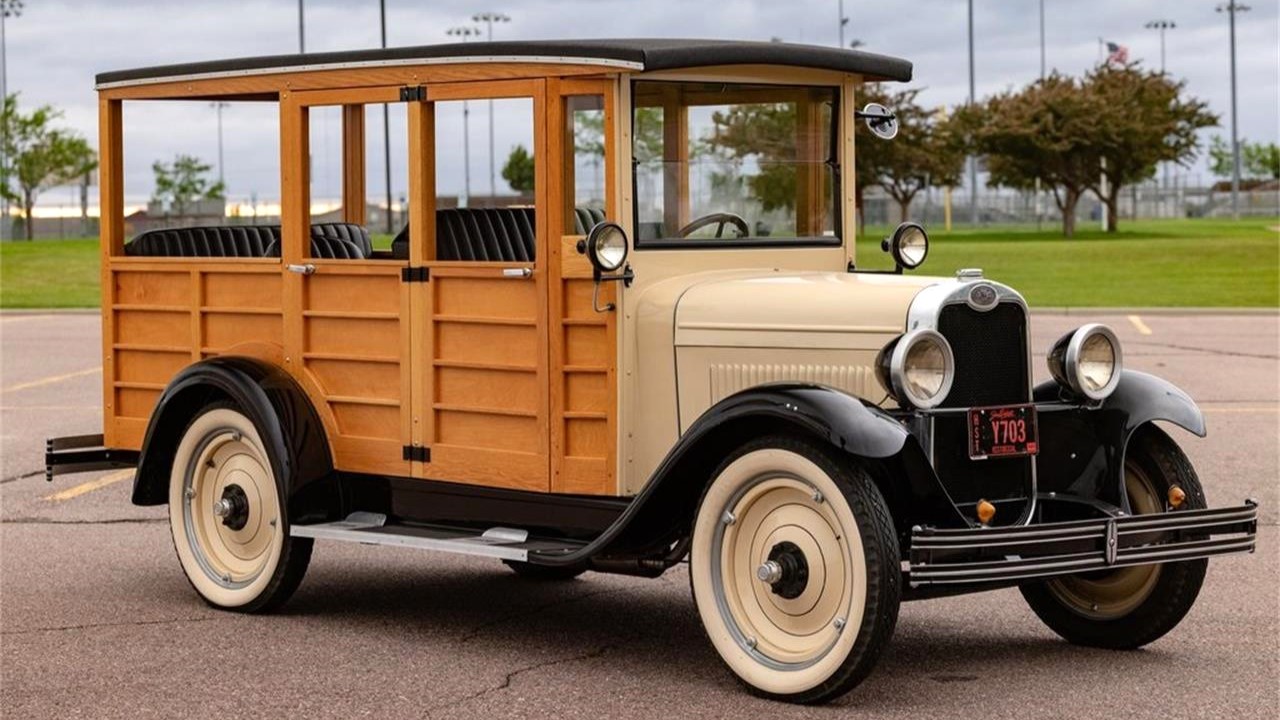
The restored ’28 you see here has a different kind of hardware . . . or is that hardwood? The selling dealer states it has a “real wood coachbuilt body,” which nicely complements the beige cowl and hood, and the matching disc-style wheels.
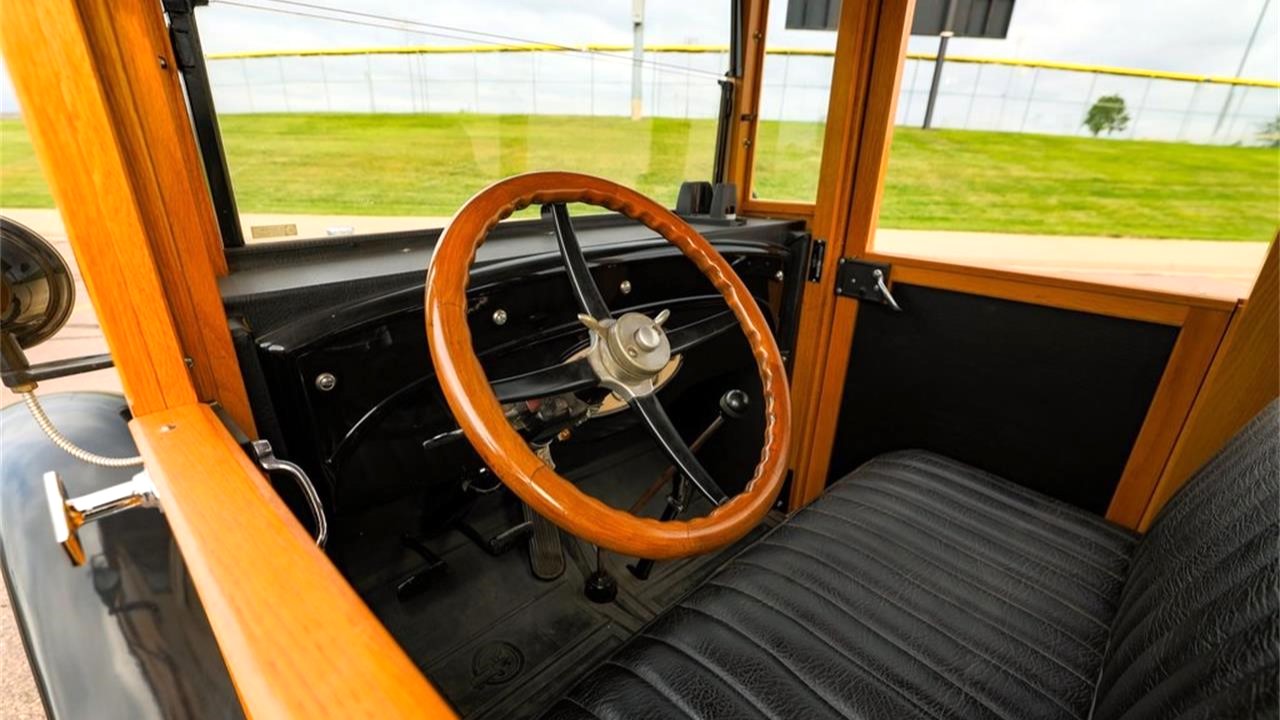
Inside, all three rows of seats are upholstered in pleated black vinyl and covered by a ceiling made of wood slats that match the exterior.
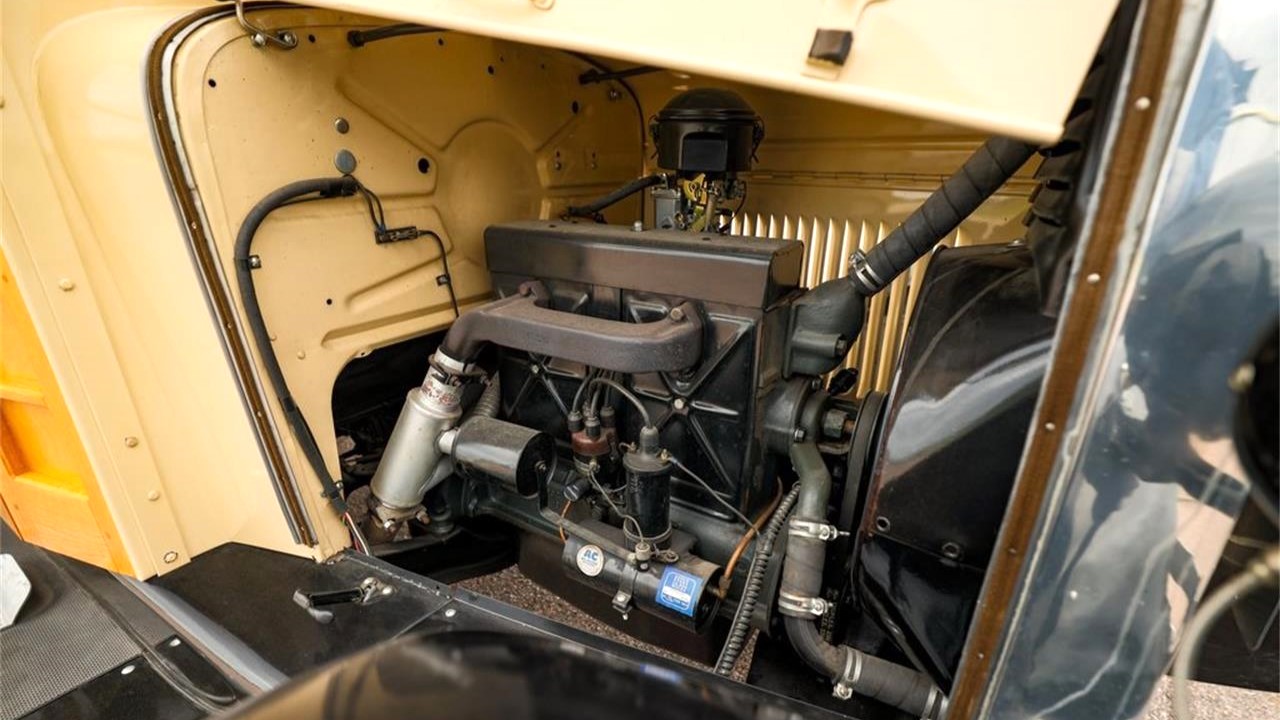
Behind the tall radiator is a 35-horsepower 171ci OHV I4 that transmits its output through a three-speed manual gearbox and the rear wheels.
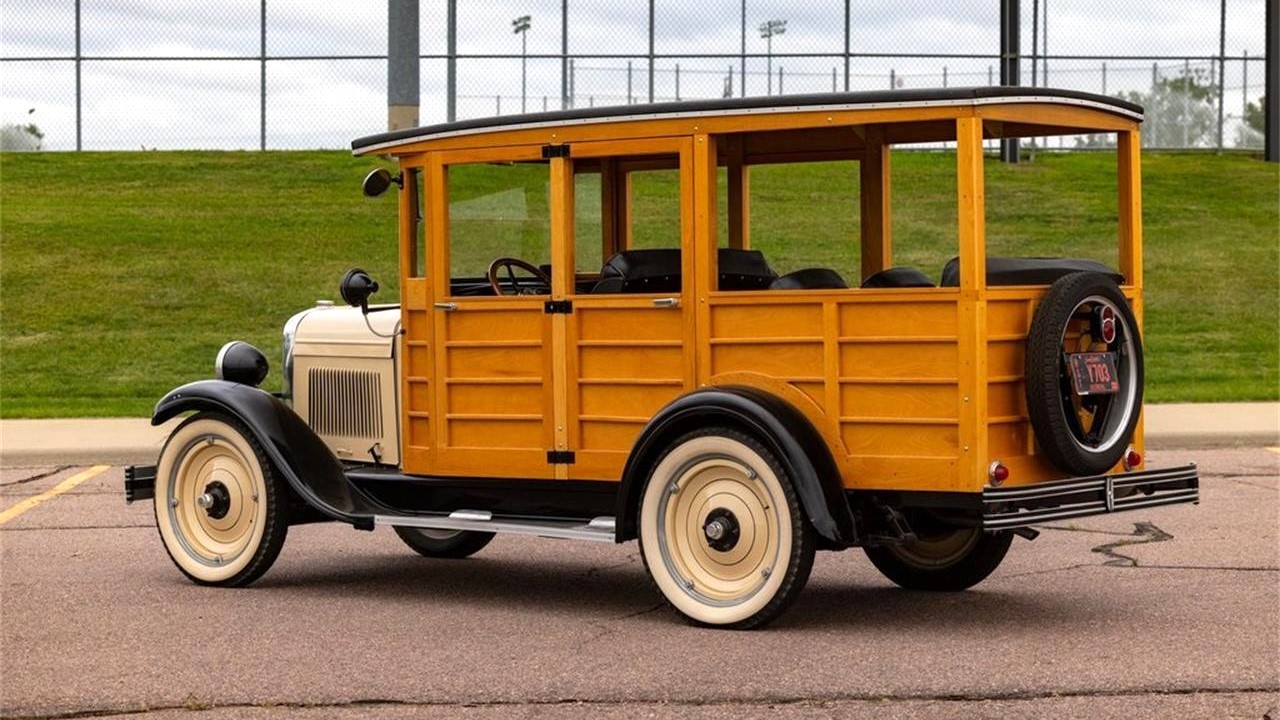
This woodie wagon looks like it was made for taking the family out for a leisurely drive or the grandkids to the local ice cream shop, but it could also be a great business vehicle. Think of how charming this would be as a shuttle at your vineyard, bed-and-breakfast, or wedding venue.
If you buy this 1928 Chevrolet Series AB National woodie wagon for $28,700, you’ll get a lot closer to making any of those ideas into reality.
Click here to view this Pick of the Day on ClassicCars.com
The automotive world is experiencing a remarkable renaissance. Carmakers are revisiting their storied pasts, taking inspiration from classic models that once defined eras. Yet, they’re not just replicating history—they’re fusing timeless design cues with state-of-the-art technology and sustainable innovation. The result? Vehicles that stir nostalgia while pushing boundaries.
This list celebrates twenty modern cars that masterfully bridge the gap between yesterday’s icons and tomorrow’s possibilities, showing how the road ahead is paved by honoring where we’ve been.
This ’31 Ford Model A is a steel-bodied roadster that was built using Brookville components, and the seller states the car body started as a coupe before the top was removed c. 2000. Initial work was completed around 2012, and the House of Kolor Planet Green paintwork is matched with green LED show lights and color-matched American Racing wheels. The car rides on a drop front end with a transverse leaf spring and a four-bar setup, while out back is a four-link setup with coil springs, and discs are mounted all around. Inside are contoured bucket seats, leather upholstery, a billet steering wheel mounted on a tilt column, a Lokar shifter, and digital gauges. Power comes from a 350ci V8 with a COMP Cams camshaft, headers, and an Edelbrock carburetor, and it is linked to Turbo 350 automatic and a Ford 9″ rear end. Acquired by the current owner in 2025, this street rod is now offered on their behalf with records and an Arizona title listing the car as a 1931 SSRM coupe.

The seller tells us the body started as a steel coupe, and the top was removed c. 2000. Brookville components and fiberglass fenders were fitted along a custom radiator surround, and it has been painted House of Kolor Planet Green. Turn signals are integrated into the chrome spreader bar, and styled nerf bars are utilized front and back. The suicide doors operate on poppers.

Green LED show lights have been fitted around the car, under the hood, and in the truck.

The front suspension was sourced from Summit Racing and Speedway, and it is comprised of a drop axle, a four-bar setup, a transverse leaf spring, and tube shocks. Out back is a four-link setup with coil springs and tube shocks, and discs are mounted all around.

Bucket seats with leather upholstery and seat belts have been fitted, and the billet wheel is mounted on a tilt column. The door handles are billet as well, and the car has a hidden stereo.

~1,650 miles are indicated on the digital cluster, ~100 of which were added by the current owner.

The 350ci is topped by an Edelbrock intake manifold, an Edelbrock carburetor, and a custom-painted intake. Ford badges have been applied to the valve covers. It was built with a COMP Cams camshaft c. 2012 and MSD ignition was added in 2020, and tubular headers are linked to a dual exhaust system with cutouts.

The car has a Turbo 350 automatic with a cooler.

The car is titled as a 1931 SSRM Coupe in Arizona using the Pennsylvania assigned VIN SW133750PA. The title carries a “Not Actual” odometer notice.
Every so often, giants of industry step out of their comfort zones, diving into realms no one expects—like car companies making computers, or tech brands crafting toasters. But perhaps the most surprising detour happens when a company best known for one thing suddenly unveils a vehicle.
Whether for publicity, innovation, or pure curiosity, these ventures often result in some of the most bizarre, memorable machines ever built.
Let’s take a closer look at twenty times household names rolled out vehicles that left the world scratching its head—and sometimes, in awe.
In the world of automobiles, big names often dominate headlines and showrooms.
However, history is filled with moments where smaller, lesser-known car companies have stunned the industry by producing vehicles that outclassed their heavyweight rivals.
Whether through groundbreaking innovation, exceptional performance, or a bold vision, these companies proved that
excellence isn’t always tied to a massive budget or global brand recognition.
This list celebrates 20 remarkable times when underdog automakers not only kept pace with the giants—but left them eating dust.

